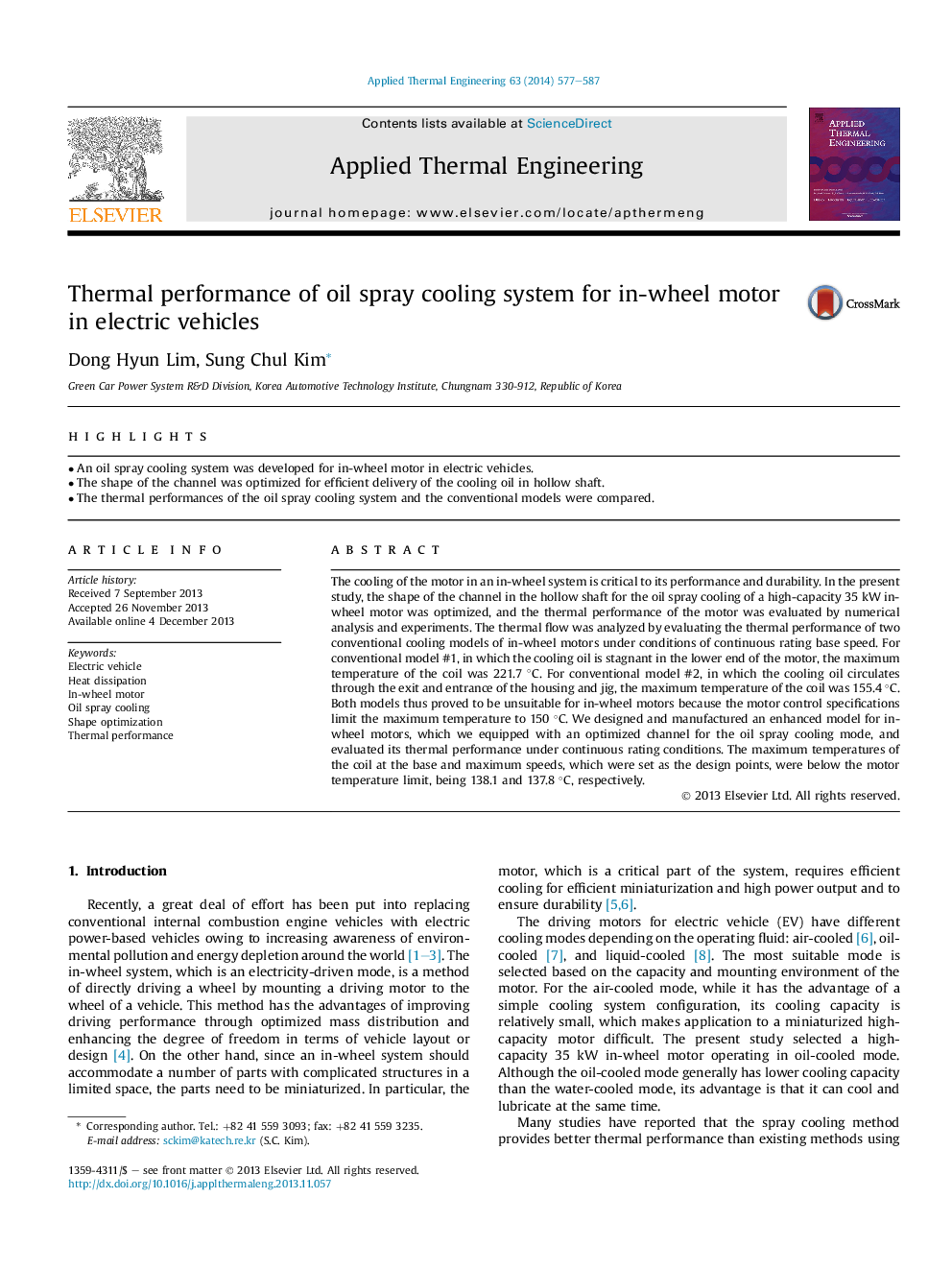| کد مقاله | کد نشریه | سال انتشار | مقاله انگلیسی | نسخه تمام متن |
|---|---|---|---|---|
| 646415 | 884562 | 2014 | 11 صفحه PDF | دانلود رایگان |
• An oil spray cooling system was developed for in-wheel motor in electric vehicles.
• The shape of the channel was optimized for efficient delivery of the cooling oil in hollow shaft.
• The thermal performances of the oil spray cooling system and the conventional models were compared.
The cooling of the motor in an in-wheel system is critical to its performance and durability. In the present study, the shape of the channel in the hollow shaft for the oil spray cooling of a high-capacity 35 kW in-wheel motor was optimized, and the thermal performance of the motor was evaluated by numerical analysis and experiments. The thermal flow was analyzed by evaluating the thermal performance of two conventional cooling models of in-wheel motors under conditions of continuous rating base speed. For conventional model #1, in which the cooling oil is stagnant in the lower end of the motor, the maximum temperature of the coil was 221.7 °C. For conventional model #2, in which the cooling oil circulates through the exit and entrance of the housing and jig, the maximum temperature of the coil was 155.4 °C. Both models thus proved to be unsuitable for in-wheel motors because the motor control specifications limit the maximum temperature to 150 °C. We designed and manufactured an enhanced model for in-wheel motors, which we equipped with an optimized channel for the oil spray cooling mode, and evaluated its thermal performance under continuous rating conditions. The maximum temperatures of the coil at the base and maximum speeds, which were set as the design points, were below the motor temperature limit, being 138.1 and 137.8 °C, respectively.
Journal: Applied Thermal Engineering - Volume 63, Issue 2, 22 February 2014, Pages 577–587
